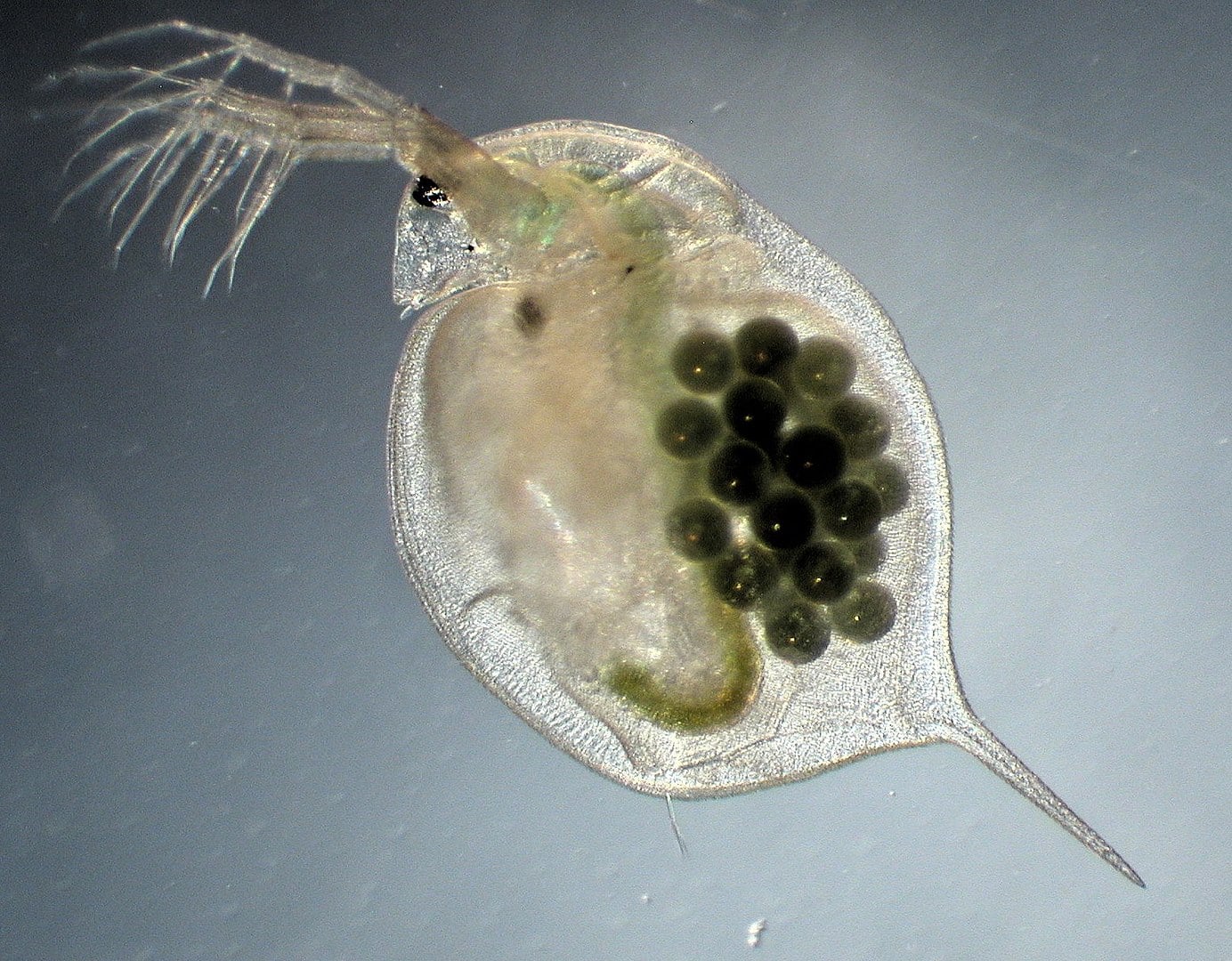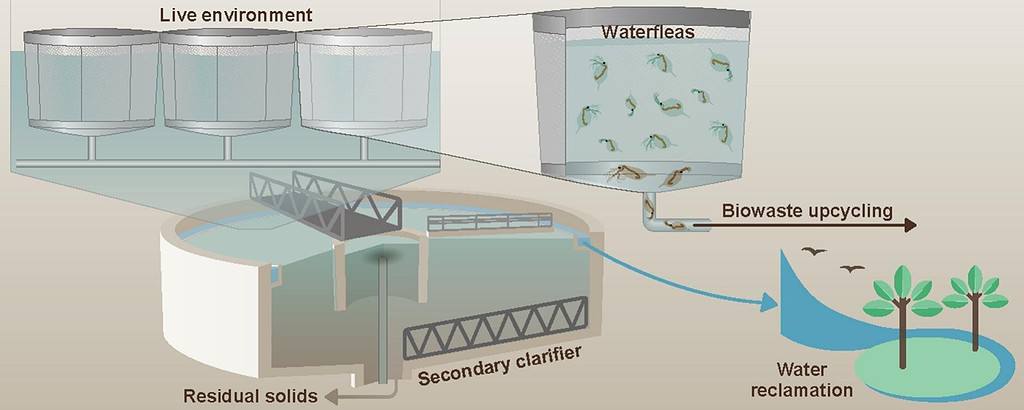Water resources are under strain due to urbanization, population growth and food production, with dangerous chemicals making their way into the environment. While wastewater treatment can make a difference, it only removes a small share of these pollutants. Now, researchers have come up with a solution, using small water fleas.

Scientists have discovered a method to harness Daphnia, one of the several small aquatic crustaceans commonly called water fleas, to provide a low-cost and low-carbon way of removing pesticides, and pharmaceutical and industrial chemicals from wastewater. This approach also avoids the byproducts of standard wastewater treatment.
The researchers created a technology that allows them to retrofit populations of water fleas into wastewater treatment plants, selecting the species based on their chemical tolerance. In a previous study published last year, the researchers showed that Daphnia can remove 7 out of 16 pharmaceuticals more efficiently than algae and bacteria.
“The water flea’s ability to remain dormant for centuries allows scientists to revive dormant populations that endured varying historical pollution pressures. Leveraging this trait, researchers sourced strains with diverse tolerances to chemical pollutants, incorporating them into the technology.” Luisa Orsini, study author, said in a news release.
Tackling water pollution
Chemical pollutants originating from domestic and industrial processes can escape conventional wastewater treatment and prevent its safe use. When wastewater is released into rivers, it eventually ends up in reservoirs, irrigation systems and aquifers. These chemicals then enter the food chain and water supply, impacting overall health.
In their study, the researchers led by the University of Birmingham demonstrated the removal efficiency of four strains of water flea on diclofenac (pharmaceutical), atrazine (pesticide), arsenic (heavy metal), and PFOS (industrial chemical). To find the fleas, they resurrected dormant embryos that were trapped in sediment at the bottom of a river.
“The water flea’s remarkable ability to remain dormant for centuries allows scientists to revive dormant populations that endured varying historical pollution pressures. Leveraging this trait, researchers sourced strains with diverse tolerances to chemical pollutants, incorporating them into the technology,” Orsini said in a news release.
After selecting the embryos, Orsini and her team grew the flea populations in the lab and tested their capacity to take on polluting chemicals — first in an aquarium of 100 liters of water and then in a treatment facility of 2,000 liters of water, as seen in the graph below. The technology is self-sustaining, as Daphnia can reproduce clonally.

Daphnia was able to remove 90% of the diclofenac, 60% of the arsenic, 59% of the atrazine and 50% of the PFOS when tested in the lab. Performance was similar in an outdoor environment. The researchers believe the technology can be upscaled and, even if that’s not the case, it could be applied to smaller wastewater treatment uses.
“This novel nature-inspired technology provides a potentially revolutionary process for sustainably removing persistent chemical pollutants from wastewater. By preventing these chemicals from being discharged, we can protect our environment and biodiversity,” Muhammad Abdullahi, lead author, said in a news release.
The study was published in the journal Science of the Total Environment.









